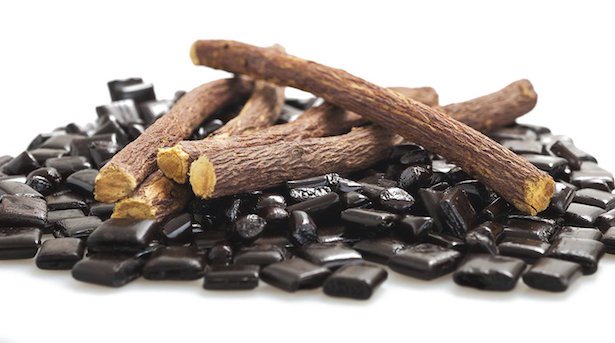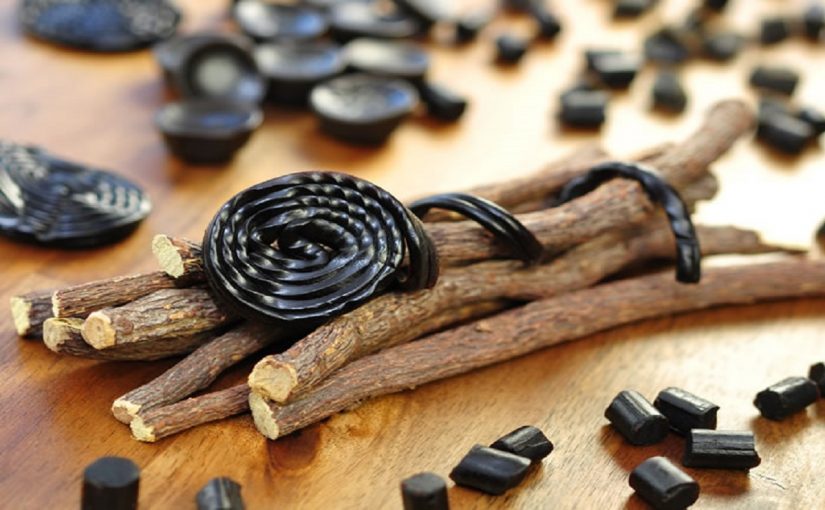21.9.2019
Tasted and loved all over the world, licorice also finds in Italy ideal soils on which to grow and develop all the properties that make it so appreciated. It happens in Calabria, especially along the Ionian coast, where about 80% of its national production is concentrated. In this area the earth provides all that is needed in terms of climate and soil composition so that the plant, belonging to the Papilionaceae family, acquires the right content of glycyrrhizin, the active ingredient that characterizes its juice. Suffice it to say that the Calabrian licorice is exported all over the world and is considered by many to be the best on the planet.
THE TRADITION
Known since ancient times, licorice was called Glycyrrhiza, a name of Greek etymology that meant plant from the sweet root. In Calabria the plant was always considered a source of wealth but, thanks to the intervention of the Duke of Corigliano, who in 1715 gave birth to the first factory dedicated to its production and transformation, it became a real element of economic development. During the eighteenth century there were numerous factories that arose in the territory of Sibartide especially in the municipalities of Rossano and Corigliano, still today the main centers of product transformation.
THE TERRITORY
The most representative place of the production and processing of Calabrian licorice, is absolutely Rossano, which has a long history that has led it to be an important Byzantine center, so much so that even today it is often remembered as “La Bizantina“. Walking through its historic center means coming across numerous historical evidences that trace the salient epochs of the town.

CERTIFICATION OF ORIGIN
Calabrian Licorice obtained the local certification of origin (so called DOP certification) in 2011. The name “Liquirizia di Calabria” is a DOP and is reserved exclusively for fresh or dried licorice and its extract. This licorice, must come from the cultivation and from the spontaneous plant of Glychirrhiza glabra in the variety called in Calabrian dialect “Cordara” and must meet the conditions and requirements established by the production disciplinary.
PRODUCTION
To obtain an excellent licorice, today as in the past, the roots are triturated with the help of a special machine, thus obtaining a paste from which the juice is extracted which is boiled in large boilers until it has acquired a thick and solid consistency. Producers then proceed with polishing using violent jets of water vapor and cutting the product obtained in the desired shapes.
FEATURES
The success of this plant throughout history is due not only to the beneficial effects on the body linked to its consumption, but also to its intensely aromatic, sweet but at the same time bitter taste. A flavor that comes directly from its strong and very long roots, able to anchor itself firmly to the soil, even to those with a clayey composition. The roots penetrate deeply into the earth reaching over a meter in length, so much so that in antiquity it was believed that they reached as far as Hell.
PROPERTIES
Licorice is an excellent ally of the respiratory system and contains a precious active ingredient able to reduce cough stimuli and promote expectoration. Chewing its roots helps to digest and, according to many, even to stop smoking. Its properties have been known since ancient times and it is no coincidence, therefore, that in the course of history licorice has conquered illustrious admirers. It is said, in fact, that Napoleon used to consume it before battles to alleviate stomach pains, and that Casanova always kept a little licorice on his bedside table to relax between his conquests.
IN THE KITCHEN
Traditionally licorice is used above all in the confectionery industry for the production of sweets, pastilles, syrups and herbal teas. Today licorice has become an increasingly used ingredient especially in haute cuisine whose exponents explore ever new flavors and combinations.

RECIPE
More and more recipe books and restaurants are available where you can try recipes of pasta dishes and desserts flavored with licorice but, in the Calabrian tradition par excellence, the tasty root is used for the preparation of an extremely aromatic liqueur with marked digestive properties. To obtain it, alcohol and sugar syrup must be added to the licorice juice, and let the mixture rest for about a month.






